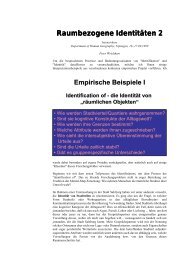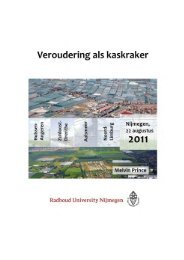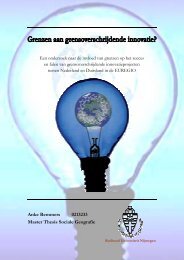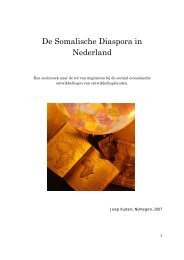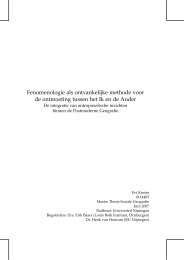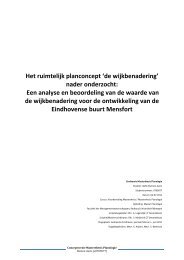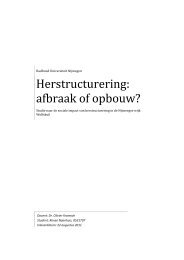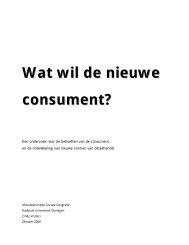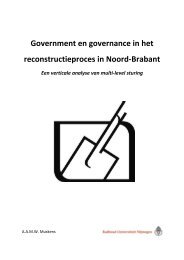Trading with the enemy in Mitrovica, Kosovo. - RUhosting
Trading with the enemy in Mitrovica, Kosovo. - RUhosting
Trading with the enemy in Mitrovica, Kosovo. - RUhosting
You also want an ePaper? Increase the reach of your titles
YUMPU automatically turns print PDFs into web optimized ePapers that Google loves.
<strong>the</strong> highest aid per capita ever given to a country. There are results of this, but for many people <strong>the</strong>se are<br />
disappo<strong>in</strong>t<strong>in</strong>g. The <strong>in</strong>frastructure has not completely recovered yet, and while most roads are reconstructed<br />
water and electricity supplies rema<strong>in</strong> a problem. Daily water and power cuts are no exception, <strong>with</strong> <strong>the</strong>ir<br />
length and occurrence depend<strong>in</strong>g on both <strong>the</strong> area and season. For example, <strong>in</strong> my experience <strong>Mitrovica</strong> was<br />
more prone to water shortages but less to power cuts compared to Prist<strong>in</strong>a and <strong>in</strong> <strong>the</strong> summer a general lack<br />
of water happened more often (field notes). Especially <strong>the</strong> unreliability of energy is a major drag on<br />
<strong>in</strong>vestment <strong>in</strong> and growth of <strong>the</strong> economy (UN, 2008).<br />
For most locals though, <strong>the</strong> economy itself is <strong>the</strong> most important issue and <strong>the</strong>y expected more progress <strong>in</strong><br />
rebuild<strong>in</strong>g this. People from both communities (Albanians and Serbs) consider <strong>the</strong> economy one of <strong>the</strong><br />
biggest problems <strong>the</strong>y face (CARE, 2006), and <strong>the</strong> lack of progress <strong>in</strong> rebuild<strong>in</strong>g <strong>the</strong> economy may be one of<br />
<strong>the</strong> biggest reasons for <strong>the</strong> grow<strong>in</strong>g resentment among Albanians aga<strong>in</strong>st <strong>the</strong> IC presence.<br />
4.2.5. The Economy<br />
<strong>Kosovo</strong>'s currency is <strong>the</strong> Euro, which was officially adopted on <strong>the</strong> first of January 2002 as <strong>the</strong> local<br />
currency, <strong>the</strong> same day Euro co<strong>in</strong>s and banknotes went <strong>in</strong>to circulation <strong>in</strong> <strong>the</strong> rest of Europe. Nor <strong>the</strong> people,<br />
nor <strong>the</strong> government of <strong>Kosovo</strong> really had any choice <strong>in</strong> this: <strong>the</strong>y had been us<strong>in</strong>g Deutsch marks s<strong>in</strong>ce before<br />
<strong>the</strong> war <strong>in</strong>stead of Serbian D<strong>in</strong>ars as <strong>the</strong>ir ma<strong>in</strong> currency and so by 2002 had to adopt <strong>the</strong> EURO (field<br />
notes). The Serbian d<strong>in</strong>ar is still used <strong>in</strong> Serbian-majority areas of <strong>Kosovo</strong> such as <strong>Mitrovica</strong> north. This<br />
illustrates <strong>the</strong> division of <strong>Mitrovica</strong> very well: <strong>Mitrovica</strong> south <strong>the</strong> Euro is <strong>the</strong> official currency while <strong>in</strong><br />
<strong>Mitrovica</strong> north this is <strong>the</strong> Serbian d<strong>in</strong>ar.<br />
In 2008 <strong>Kosovo</strong>'s Gross Domestic Product (GDP) was 3.804 billion Euro and it's GDP growth rate 5.4%, this<br />
growth is attributed for a large part to <strong>the</strong> private sector. <strong>Kosovo</strong>'s <strong>in</strong>terest rate has been stable around 1 or 2<br />
percent <strong>the</strong> past 6 years, but this year for <strong>the</strong> first time <strong>in</strong>creased strongly: to 7.2% (ECIKS, 2009). <strong>Kosovo</strong> is<br />
still an import based economy, <strong>with</strong> its import be<strong>in</strong>g over 10 times as high as its export. <strong>Kosovo</strong> imported for<br />
over 1.6 billion Euro over 2007, while its exports were 146.6 million <strong>the</strong> same year. Both import and export<br />
has been <strong>in</strong>creas<strong>in</strong>g steadily <strong>the</strong> past years though, <strong>with</strong> most trade tak<strong>in</strong>g place <strong>with</strong> CEFTA-members and<br />
EU-countries. Its ma<strong>in</strong> imports are m<strong>in</strong>eral products, prepared foodstuffs and mach<strong>in</strong>ery while its ma<strong>in</strong><br />
exports are base metals by far, followed by m<strong>in</strong>erals (ECIKS, 2008).<br />
Not only <strong>the</strong> imports and exports are grow<strong>in</strong>g every year, also <strong>the</strong> GDP has been grow<strong>in</strong>g steadily every year.<br />
What has stayed <strong>the</strong> same <strong>the</strong> past 5 years though is <strong>the</strong> unemployment rate, which is still around 40%<br />
(ECIKS, 2008). It must be considered that <strong>the</strong>re's a substantial black and grey economy <strong>in</strong> <strong>Kosovo</strong> so <strong>the</strong>se<br />
numbers are not entirely representative. Every year around 30,000 young people enter <strong>the</strong> labour market<br />
(UN, 2008), this rapid growth of <strong>the</strong> population might be one of <strong>the</strong> explanations for why <strong>the</strong> economy is<br />
improv<strong>in</strong>g but unemployment rates rema<strong>in</strong> equal. The people who do have a job earned on average 236<br />
40



